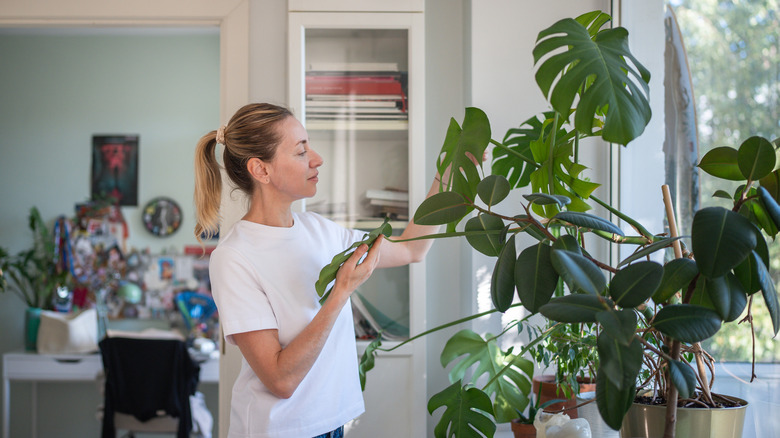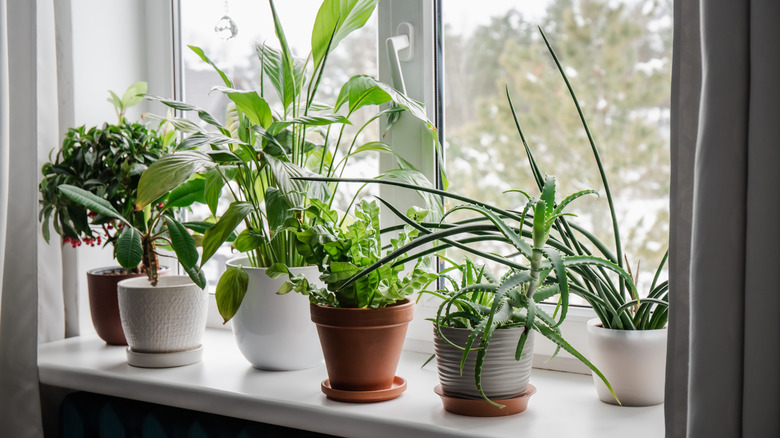The Placement Mistake That's Encouraging Pesky Thrips To Destroy Your Indoor Plants
What you might assume are just specks of dust or dirt settling on your houseplants may be an insistent pest. Many homeowners overlook the presence of thrips on their plants, given their small size, but these minuscule insects can wreak havoc on your houseplants. Thrips can be difficult to manage, not just because of their size, but because they lay eggs directly into flowers, leaves, and stems. A typical treatment includes insecticidal soap as well as hand removal. However, there is another tactic you can try to keep the rest of your plants safe from thrips: keep your plants separate.
When you keep your various houseplants in extremely close contact with one another, you risk the chance of spreading infestations, like thrips, from plant to plant. If one of your plants is decaying from thrips, chances are its next-door neighbor plant will start experiencing symptoms as well. Thrips are capable of flying and jumping from plant to plant, targeting specific houseplants with thin, broad leaves like monstera, peace lilies, and ZZ plants. If you want to avoid spreading a thrip infestation to your other plants, you need to separate your plants, isolate any infected ones, and provide treatment as soon as possible.
How do you know if your plants have a thrips infestation? If you've noticed your houseplants start to look discolored or damaged, like browning, yellowing, and curling leaves, then you may want to inspect them closer for thrips. Scarring and silver flecks on the leaves, as well as tiny brown spots on the undersides, could also indicate a thrip infestation. While adult thrips are typically 1/5 of an inch long and dark, their larvae are smaller and light-colored, so they're not easy to spot. Fortunately, thrips can be combatted with a few tricks.
How to reduce your risk of a thrips infestation
First, as a preventative measure, make sure to keep your houseplants separate, especially when bringing home new ones for the first time. A new plant should ideally be quarantined for at least two to three weeks. Not only do you want to keep them physically separated, but you also want to avoid using shared tools until you're sure the new plant is healthy. During this time, you can watch for any signs of thrips and treat them accordingly before placing them in the vicinity of your other plants.
If you do see signs of thrips on your isolated plants, you have a few options. First is manual removal. You can do this with a wet paper towel or even a lint roller. A second option is to use a non-toxic solution, such as neem oil or insecticidal soap. Lastly, you can also try repotting your favorite plants with an infestation, as thrips nymphs tend to burrow into the soil for their pupation period. It's not a bad idea to even sanitize your container before adding in your new plant. If even these methods are not effective after a few weeks, unfortunately, you may need to dispose of the plant. At this point, treatment might not work, and you're continuing to risk your other houseplants' well-being.

